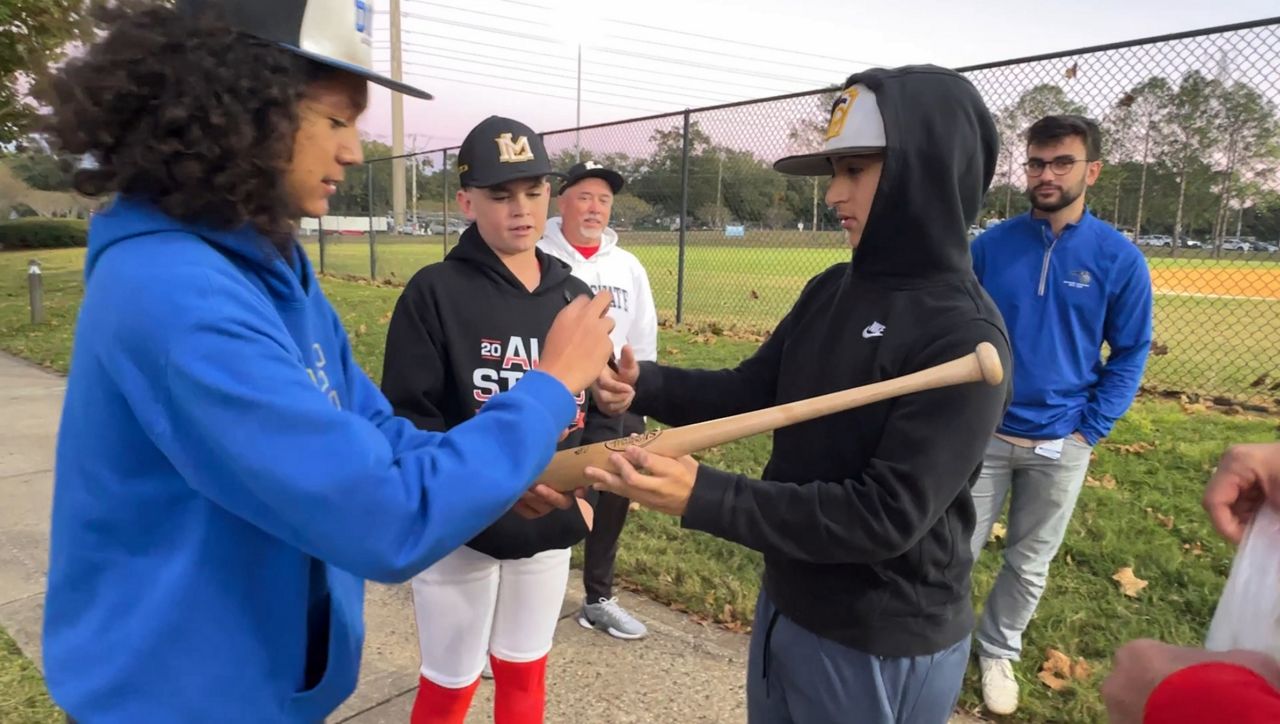World
What NATO Means to the World

Next week, the leaders of NATO’s 32 countries will meet in Washington, D.C., for the alliance’s 75th-anniversary summit. They will celebrate 75 years of unity between Europe and North America—unity that has protected transatlantic peace, democracy, and prosperity. But more than just a celebration, the summit will be an opportunity to make decisions that matter for the future of one billion people across Europe and North America.
Today, their security is at stake. When Russian President Vladimir Putin sent tanks into Ukraine in February 2022, he began the bloodiest conflict in Europe since World War II, shattering peace on the continent and creating turmoil on the global stage. Day after day, he is further escalating this war. Not only are Russian missiles continuously targeting Ukraine’s citizens, cities, and critical infrastructure but the Kremlin is also engaging in a coordinated campaign of hostile acts against NATO countries—including sabotage, cyberattacks, and disinformation. All the while, Moscow continues to rattle its nuclear saber.
Putin shows no intention of ending this war any time soon, and he is increasingly aligned with other authoritarian powers, including China, that wish to see the United States fail, Europe fracture, and NATO falter. This shows that in today’s world, security is not a regional matter but a global one. Europe’s security affects Asia, and Asia’s security affects Europe.
These are big challenges that call for bold decisions, and that is what alliance leaders will address at the NATO summit. Starting at home, we will strengthen our own defenses to keep our people safe. We will also bolster our support for Ukraine, and work hand in hand with our partners in the Indo-Pacific on our shared security concerns. The result will be an even stronger NATO—ready to respond to challenges today and for the long term.
BIGGER AND BETTER
NATO’s main purpose is not to fight war but to prevent war. That is what the alliance has successfully done for three-quarters of a century, even during some of the most dangerous periods of the Cold War, when there were hundreds of thousands of combat-ready Soviet troops on NATO’s borders. Experience has taught us that the best way to prevent any attack is by ensuring that our deterrence remains credible and our defenses strong. In other words, the best way to maintain peace is to be prepared for war.
The end of the Cold War reduced tensions in Europe, but 2014 marked a turning point for transatlantic security. Following Russia’s illegal annexation of Crimea and its destabilization of eastern Ukraine, NATO renewed its focus on its core task of deterrence and defense. The alliance embarked on the most significant transformation in its collective defense in a generation. It moved away from major operations outside its borders and refocused on stronger defense at home—with more forces at higher readiness, across all domains. NATO has also better prepared itself for enduring competition with China, including by reducing harmful dependencies and increasing protection of its critical infrastructure, strategic materials, and supply chains.
Today, NATO is much stronger. The alliance’s militaries are better trained and better equipped. There are half a million troops at high readiness across all domains—land, sea, air, space, and cyberspace—prepared to defend every NATO ally at any time. They train to work seamlessly together through large and demanding exercises, such as this year’s Steadfast Defender exercise, which saw North American troops cross the Atlantic, move across Europe, and exercise with European forces—involving some 90,000 troops in total.
NATO countries are also investing more money in their security. Since 2014, the defense budgets of all member states have gone up. This year alone, European allies and Canada have increased defense spending by 18 percent—the biggest increase since the end of the Cold War. When I became NATO secretary-general, in 2014, only three allies spent two percent of GDP on defense: Greece, the United Kingdom, and the United States. When Putin launched his full-scale invasion of Ukraine in February 2022, there were still fewer than ten hitting the mark. This year, 23 allies are at or above two percent. Europe and Canada have really stepped up. The United States is not shouldering the burden of the alliance’s shared security alone.
To be clear, NATO is not strengthening its defenses to provoke war. It is doing so to protect peace. I do not see any imminent risk of a military attack against a NATO country, because the alliance’s deterrence works. Everyone has seen what the alliance risks by letting its guard down. By being stronger, we stay safer.
RISE TO THE OCCASION
Since Russia’s full-scale invasion of Ukraine in February 2022, NATO states have sent significant military aid to help Ukraine defend itself against Russian aggression. This support has made a big difference on the battlefield. Initially, many expected the war to be short, with Kyiv falling to Russia within days and Ukraine in weeks. Instead, the Ukrainians stood strong. With NATO’s support, they bravely fought for their country and their freedom—regaining over half the territory the Russians had seized and pushing back the Russian fleet in the Black Sea. The latter success allowed them to restart exporting Ukrainian grain to world markets.
There have been significant delays in the provision of aid that have had serious consequences on the battlefield. For months, the United States was unable to pass a new package of aid, and Europeans have been unable to deliver ammunition at the scale they had promised. I witnessed this when I was in Kyiv in April, where Ukrainian President Volodymyr Zelensky explained to me how Ukraine had been outgunned and unable to shoot down Russian missiles and drones. Since then, things have changed. NATO allies on both sides of the Atlantic have made significant new announcements, including a $60 billion package from the United States, in order to provide the ammunition and air defenses that Ukraine so urgently needs.
The reality, however, is that for Ukraine to prevail, NATO needs to do more—and more quickly. To that end, at the Washington summit, the allies will agree on having NATO lead the coordination of security assistance and training for Ukraine. This will make the alliance’s support truly transatlantic and reduce the burden on the United States, which currently takes the lead. This switch also makes sense, given that 99 percent of military support already comes from NATO members, with about half coming from the United States and the other half from Europe and Canada. I also expect that we will agree on a financial pledge, to give Ukraine the predictability it needs. We want to make it clear that we are in this for the long haul. The stronger our support to Ukraine, the sooner Putin will realize that he cannot wait us out, and the faster this war can end.
Stepping up our support does not make NATO a party to this conflict. The alliance does not seek confrontation with Russia. But we have supported and will continue to do all we can to support Ukraine’s fundamental right to self-defense, as enshrined in the UN Charter.
SAME BOAT
Finally, at the summit next week, NATO will deepen ties with its global partners—most notably in the Indo-Pacific. I look forward to welcoming the leaders of Australia, Japan, New Zealand, and South Korea in Washington. It will be the third time these countries attend a NATO summit: a testimony to our growing ties and shared interests. Together, we will stand up to authoritarianism, uphold global rules, and protect our democratic values, now and into the future. We will build on practical cooperation through flagship projects on Ukraine, cyber, disinformation, new technologies, and defense industrial production.
NATO is an alliance of Europe and North America, and it will remain so. But the challenges we face are international. The war in Ukraine clearly demonstrates this fact. Russia would be incapable of sustaining this war without the support of its authoritarian friends in Asia. Iran and North Korea, respectively, give Russia deadly drones and artillery shells in exchange for Russian technology and military supplies.
For its part, Beijing is providing critical support to Moscow’s war effort. Publicly, Chinese President Xi Jinping wants the world to believe that he is pushing for peace. Privately, however, he is fueling the conflict by sending Russia high-end technologies such as semiconductors and microelectronics that Moscow uses to produce missiles, tanks, and aircraft. At the same time, Xi wants to maintain good relations with the West to avoid sanctions and keep trade flowing. But he cannot have it both ways. At some point, China’s support for Russia’s illegal war must come with a cost.
The Washington summit affords NATO a chance to, once again, show its unity and resolve. The challenges that NATO faces are too big for any one country to tackle alone—not even the United States, the world’s biggest power. The United States is home to a quarter of the world’s economy, but combined, NATO allies have half of the world’s economy and half its military might. Together, our deterrence is more credible, our support to Ukraine is more constant, and our cooperation with outside partners is more effective. Putin and Xi are adamantly opposed to NATO because it represents what they fear most: the freedom to choose one’s own destiny. They hate the bloc because it has what they do not: great strength in the unity of 32 allied countries. As the leaders of these countries head to the Washington summit next week, they must prepare for an increasingly dangerous world. Not alone, but together, in a strong NATO.
Loading…



![Podcast [English World] Episode 77: Scan-free ticket gates Podcast [English World] Episode 77: Scan-free ticket gates](https://img.kyodonews.net/english/public/images/posts/8367a5e1916be92c4e60b9cb878b241b/cropped_image_l.jpg)






